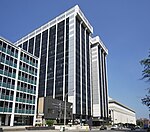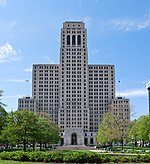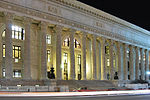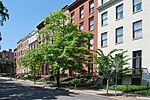Sheridan Hollow, Albany, New York

Sheridan Hollow is a neighborhood in Albany, New York located in a ravine north of Downtown Albany. Capitol Hill to the south and Arbor Hill to the north flank the ravine. Often the neighborhood is overlooked by city residents, and outsiders who work in the neighborhood often don't recognize the name of the neighborhood. This is due to the identity of the Hollow being subsumed into its larger neighbor Arbor Hill, for instance news stories of events are often accredited to the wrong neighborhood. Being on undesirable land for development in colonial times, growth was slow in the Hollow and the neighborhood was populated through the centuries by a series of ethnic groups new to Albany, such as the Irish, Polish, and African Americans.
Excerpt from the Wikipedia article Sheridan Hollow, Albany, New York (License: CC BY-SA 3.0, Authors, Images).Sheridan Hollow, Albany, New York
Sheridan Avenue, City of Albany
Geographical coordinates (GPS) Address Nearby Places Show on map
Geographical coordinates (GPS)
| Latitude | Longitude |
|---|---|
| N 42.657222222222 ° | E -73.758055555556 ° |
Address
Sheridan Avenue 189
12210 City of Albany
New York, United States
Open on Google Maps











